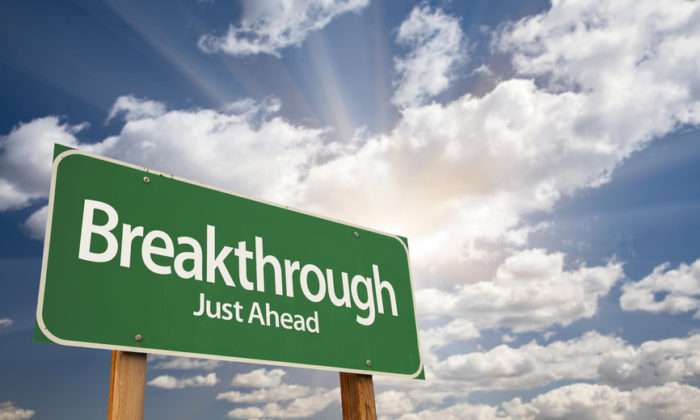July 9, 2017

As a holistic nutritionist, I’m supposed to be all for that positive self-talk stuff, right? This might surprise you, but I’m terrible at it! Don’t get me wrong, I completely see the value in it, and I always encourage it for others, but the truth is I have a really hard time doing it myself. I feel kinda silly or sissy about it. Add to that, I’m a super high energy do’er, and slowing down long enough to have a little rah-rah with myself typically hasn’t been high priority.
Maybe you see a bit of yourself in me? Well, I’m here to tell you that I have learned and now understand the pathways in the body that are influenced by affirmations and YES, I do indeed now practice this. Here’s WHY you need to also, and HOW-TO.
We all know someone who desperately wants to lose weight and has declared time and time again, I’m going on a diet tomorrow or I’m going to start exercising, only to abandon their resolve barely before starting (maybe it’s you?). Or the smoker who repeatedly tries to quit without success, then one day he just does it. What changed? What finally made it attainable and maintainable?
Here’s the answer:
“Human beings follow through on who they think they are”.
Tony Robbins
Hold on, don’t write this off yet. Here are a couple other ways to look at it (then we’ll dig into the science, I promise).
Consider the mechanism of a boat’s steering. There’s the wheel up on deck, connected to a rudder down below under the surface. These two parts – the internal part that isn’t visible (rudder) and the external steering wheel must be aligned to get the boat moving in the direction you want. If lines are broken, if the connection is fractured, no matter how much you try to steer that boat to the right, it’s not going to go there.
The iceberg that sank the Titanic had only a fraction of its deadly rock above water level. The majority of its structure, and the most damaging part was underwater – not visible, but unquestionably very powerful.
Like the boat rudder and like an iceberg, we cannot underestimate the power and influence of what is under the surface.
Our own internal beliefs and thoughts are just as powerful. And like a boat’s rudder, that powerful internal self must be aligned with what we externally desire if we are to steer our actions in the direction of reaching our goals.
Enter affirmations.
First, let’s not call them affirmations anymore. I used that term until now because most people recognize the word. However, the word also turns some people off (like it did me!) so let’s call it a “script” instead.
More than sufficient evidence suggests that when you hear and/or say something repeatedly, it slowly and progressively becomes more and more a part of… drum roll please… your internal self [the boat rudder, or the hidden and largest part of the iceberg]. You’re getting it now, right?
That is why the boy who fakes being sick to avoid going to school when he didn’t finished his homework, is in fact, sick by noon – because he kept saying it and playing the part all morning and it eventually it became his internal reality.
It’s also the logic behind the statement, “Fake it til you make it”.
Now it may not happen in a day, but you might be surprised (as I was) just how influential repeating your script out loud to yourself 4x each morning and 4x each evening before bed can be!
How to create your script/affirmation?
There are dozens of ways to create a meaningful script for yourself, beyond the general “I am beautiful” and “You are worth it”.
The BUILD method is action oriented and involves identifying your:
- Goals
- Obstacles
- Action Plans
- Rewards
Here’s how to get started. Complete the following 4-part exercise to create your script/s:
1) What is your goal? Be specific (you may have more than one).
Example: I want to lose 10 lbs.
2) For each goal, identify the major obstacle/s that may prevent you from reaching this goal.
Example: Being unorganized and not cooking healthy food, grabbing for junk food when I’m hungry.
3) Come up with an action plan to tackle each of your identified obstacles.
Example: I will commit to food prep on Sundays for my upcoming week, so that I always have healthy options available, making it less tempting to reach for junk food when I am hungry.
4) How will you feel when you’ve reach this goal?
Example: I will feel amazing! I’ll be comfortable in my body and in my clothes, and be proud of my hard work to get there.
Lastly, combine all four of your answers into a 2-3 sentence summary in the present or past tense (as though you’re already achieving your goal). Example:
I am commitment to cooking healthy food, am organized with meal prep, and am eating less junk food. I’m shed 10 lbs that was weighing me down. and I feel amazing in my new body that I’m so proud of!
Repeat this out load to yourself 4x at the start and end of your every day. Why four times? Because that’s what the literature says! But there’s no right or wrong. By saying this out loud and actually hearing the words daily, you’ll slowly be building a new internal dialogue and core belief about who you are.
Remember you may have more than one specific goal. They may include things like:
- I want to lose 10 lbs.
- I want to exercise regularly 5x per week.
- I want to run my first 10 km road race.
- I want to meditate daily.
Pick the top 1 or 2 for now, create your script for them, and go!
How long you continue doing this will depend on how you are feeling about this goal. It’s okay that your goals change over time and you may need to revisit them. As a guideline, we suggest sticking to your script for about a month at a time, long enough for it to become part of your internal self and support what you are externally seeking. As each day passes, you will feel your resolve growing and move toward crushing your goals.
Did you find this helpful?
Are there other ways you approach your affirmations? Share with us in our Facebook group, a place for info and inspo on all things nutrition & fitness 🍏
Not Your Sissy Self-Affirmations
The entire contents of this website are based upon the opinions of Build Holistic Nutrition. Please note that Build Nutrition is not a dietitian, physician, pharmacist or other licensed healthcare professional. The information on this website is NOT intended as medical advice, nor is it intended to replace the care of a qualified health care professional. This content is not intended to diagnose or treat any diseases. Always consult with your primary care physician or licensed healthcare provider for all diagnosis and treatment of any diseases or conditions, for medications or medical advice, as well as before changing your health care regimen.
© BUILD NUTRITION 2025. ALL RIGHTS RESERVED. PRIVACY POLICY
Go ahead, creep us on social. You know you want to!



